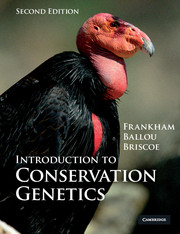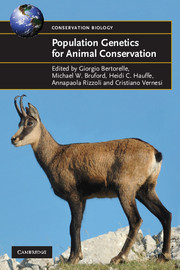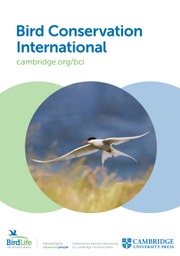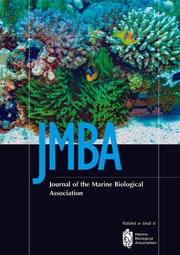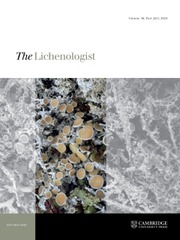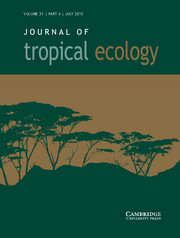
Genetics, Demography and Viability of Fragmented Populations
$84.99 (P)
Part of Conservation Biology
- Editors:
- Andrew G. Young, Division of Plant Industry CSIRO, Canberra
- Geoffrey M. Clarke, Division of Entomology, CSIRO, Canberra
- Date Published: November 2000
- availability: Available
- format: Paperback
- isbn: 9780521794213
$
84.99
(P)
Paperback
Other available formats:
Hardback, eBook
Looking for an examination copy?
If you are interested in the title for your course we can consider offering an examination copy. To register your interest please contact [email protected] providing details of the course you are teaching.
-
Habitat fragmentation is one of the most ubiquitous and serious environmental threats confronting the long-term survival of plant and animal species worldwide. As species become restricted to remnant habitats, effective management for long-term conservation requires a quantitative understanding of the genetic and demographic effects of habitat fragmentation, and the implications for population viability. This book provides a detailed introduction to the genetic and demographic issues relevant to the conservation of fragmented populations such as demographic stochasticity, genetic erosion, inbreeding, metapopulation biology, and population viability analysis. The volume presents case studies on animals and plants, which illustrate a variety of approaches to examining long-term population viability. Some of the approaches include the application of molecular genetic markers, the investigation of reproductive biology, and the combination of demographic monitoring and modeling.
Read more- Focuses on habitat fragmentation, one of the most serious threats to species worldwide
- Unique integrated approach - considers both genetic and demographic data to assess population viability in fragmented habitats
- Brings together the relevant theory required to manage conservation in fragmented habitats
- Presents a range of case studies which illustrate a variety of approaches for examining long-term population viability
Reviews & endorsements
"...this book provides scientific guidance for a way forward." L. Scott Mills, Quarterly Review of Biology
Customer reviews
Not yet reviewed
Be the first to review
Review was not posted due to profanity
×Product details
- Date Published: November 2000
- format: Paperback
- isbn: 9780521794213
- length: 460 pages
- copublisher: The Zoological Society of London
- dimensions: 229 x 152 x 26 mm
- weight: 0.67kg
- contains: 69 b/w illus. 34 tables
- availability: Available
Table of Contents
Foreword P. Brussard
1. Introduction: genetics, demography and the conservation of fragmented populations G. Clarke and A. Young
Part I. Introductory Concepts:
2. Managing and monitoring genetic erosion W. Sherwin and C. Moritz
3. Inbreeding and outbreeding depression in fragmented populations M. Dudash and C. Fenster
4. Demography and extinction in small populations K. Holsinger
5. The metapopulation paradigm: a fragmented view of conservation biology P. Thrall, J. Burdon and B. Murray
6. Population viability analysis for conservation: the good, the bad and the undescribed M. Burgman and H. Possingham
7. Applications of population genetics and molecular techniques to conservation biology P. Hedrick
Part II. Animal Case Studies:
8. Inbreeding in small populations of red-cockaded woodpeckers: insights from a spatially-explicit individual-based model S. Daniels, J. Priddy and J. Walters
9. Genetic erosion in isolated small mammal populations following rain forest fragmentation S. Srikwan and D. Woodruff
10. The Tumut experiment - integrating demographic and genetic studies to unravel fragmentation effects: a case study of the native bush rat D. Lindenmayer and R. Peakall
11. Demographic evidence of inbreeding depression in wild golden lion tamarins J. Dietz, A. Baker and J. Ballou
12. Inferring demography from genetics - a case study of the endangered golden sun moth, Synemon plana G. Clarke
13. Genetic population structure in desert bighorn sheep: implications for conservation in Arizona G. Gutierreez-Espelta, S. Kalinowski and P. Hedrick
Part III. Plant Case Studies:
14. Limited forest fragmentation improves reproduction in the declining New Zealand mistletoe Peraxilla tetrapetala (Loranthaceae) D. Kelly, J. Ladley, A. Robertson and D. Norton
15. Ecology and genetics of Grevillea (Proteaceae)
16. Genetic and demographic influences on population persistence: gene flow and genetic rescue in Silene alba C. Richards
17. Fragmentation in central American dry forests - genetic impacts on Swietenia humulis (Meliaceae) G. White and D. Boshier
18. Population viability analysis of the rare Gentiana pneumonanthe: importance of genetics, demography and reproductive biology J. Oostermeijer
19. Genetic erosion, restricted mating and reduced viability in fragmented populations of the endangered grassland herb Rutidosis leptorrhynchoides A. Young, A. Brown, B. Murray, P. Thrall and C. Miller
Part IV. Conclusions and Future Directions:
20. What do we know about the genetic and demographic effects of habitat fragmentation and where do we go from here? A. Young and G. Clarke
Index.
Sorry, this resource is locked
Please register or sign in to request access. If you are having problems accessing these resources please email [email protected]
Register Sign in» Proceed
You are now leaving the Cambridge University Press website. Your eBook purchase and download will be completed by our partner www.ebooks.com. Please see the permission section of the www.ebooks.com catalogue page for details of the print & copy limits on our eBooks.
Continue ×Are you sure you want to delete your account?
This cannot be undone.
Thank you for your feedback which will help us improve our service.
If you requested a response, we will make sure to get back to you shortly.
×
